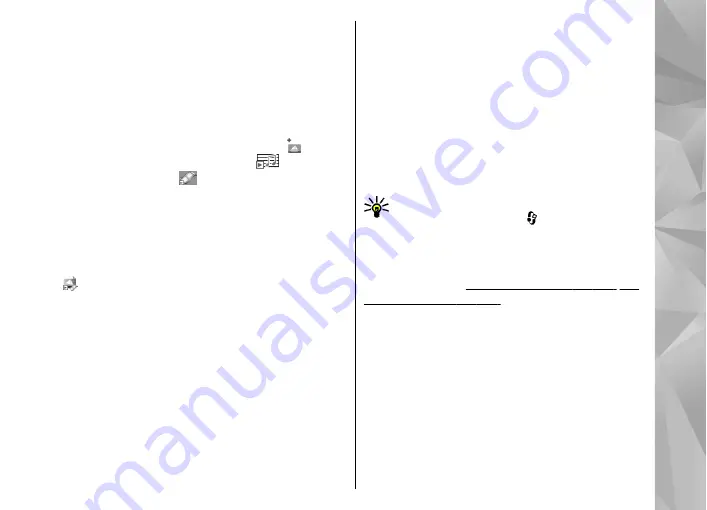
contain malicious software or otherwise be harmful
to your device or PC.
You may receive a notification that a multimedia
message is waiting in the multimedia message
centre. To start a packet data connection to retrieve
the message to your device, select
Options
>
Retrieve
.
When you open a multimedia message ( ), you
may see an image and a message.
is shown if
sound is included, or if video is included. To play
the sound or the video, select the indicator.
To see the media objects that have been included
in the multimedia message, select
Options
>
Objects
.
If the message includes a multimedia presentation,
is displayed. To play the presentation, select the
indicator.
Data, settings, and web service
messages
Your device can receive many kinds of messages
that contain data, such as business cards, ringing
tones, operator logos, calendar entries, and e-mail
notifications. You may also receive settings from
your service provider or company information
management department in a configuration
message.
To save the data from the message, select
Options
and the corresponding option.
Web service messages are notifications (for
example, news headlines) and may contain a text
message or a link. For availability and subscription,
contact your service provider.
Mailbox
Define the e-mail settings
Tip:
Use Settings wizard to define your
mailbox settings. Press , and select
Tools
>
Utilities
>
Sett. wizard
.
To use e-mail, you must have a valid internet access
point (IAP) in the device and define your e-mail
settings correctly.
You must have a separate e-mail account. Follow
the instructions given by your remote mailbox and
internet service provider (ISP).
If you select
Mailbox
in the Messaging main view
and have not set up your e-mail account, you are
prompted to do so. To start creating the e-mail
settings with the mailbox guide, select
Start
.
When you create a new mailbox, the name you give
to the mailbox replaces
Mailbox
in the Messaging
main view. You can have up to six mailboxes.
107
Messaging
















































